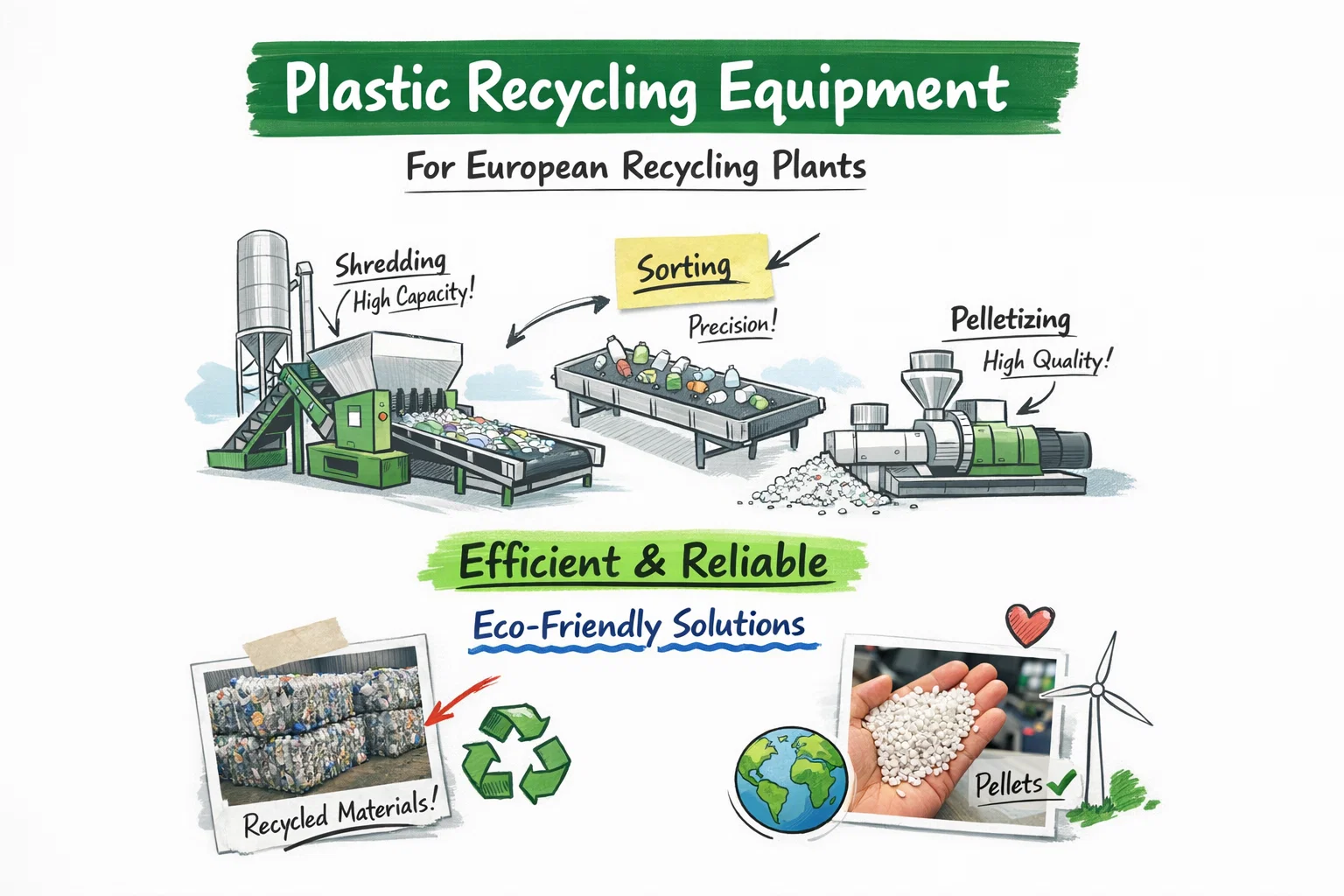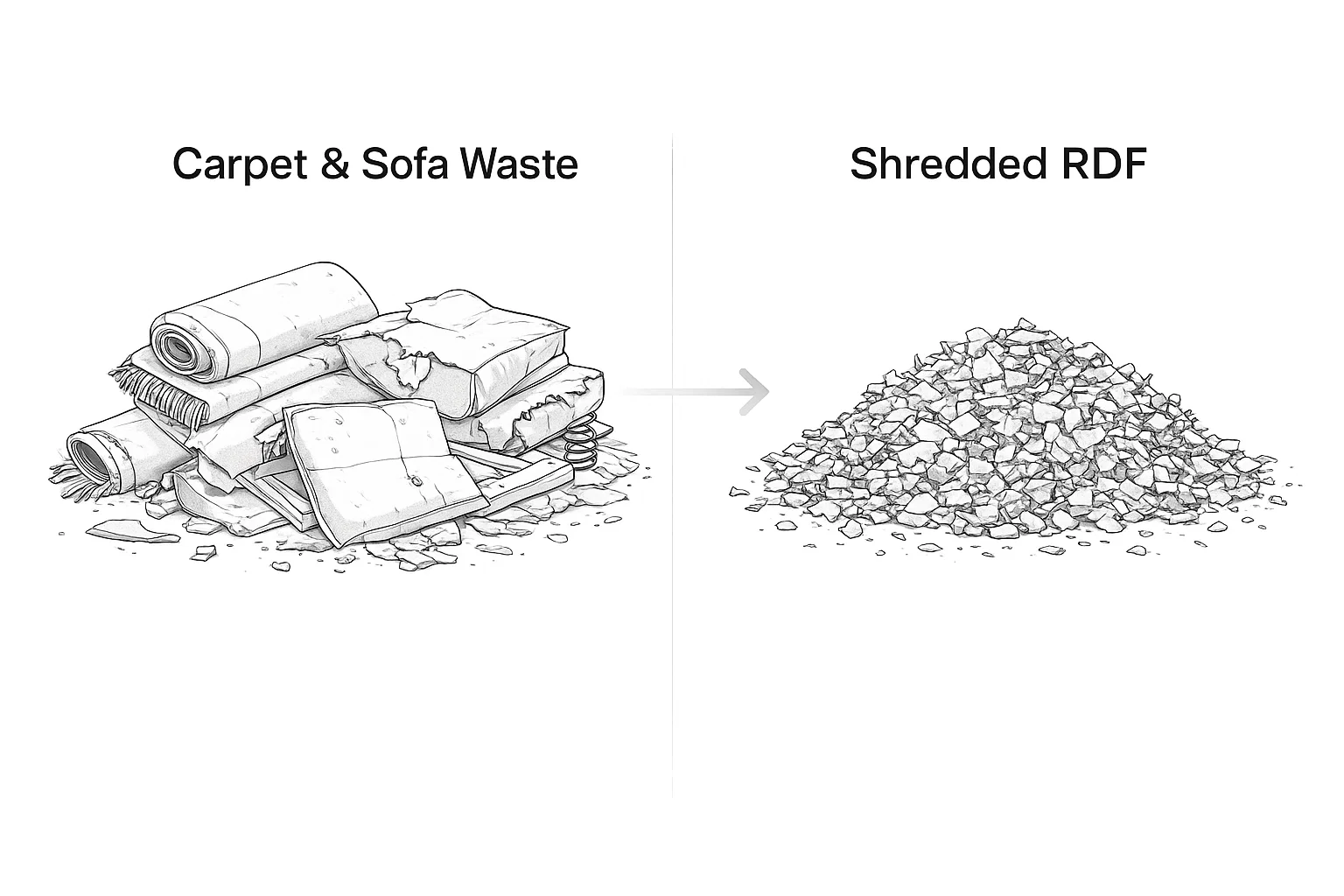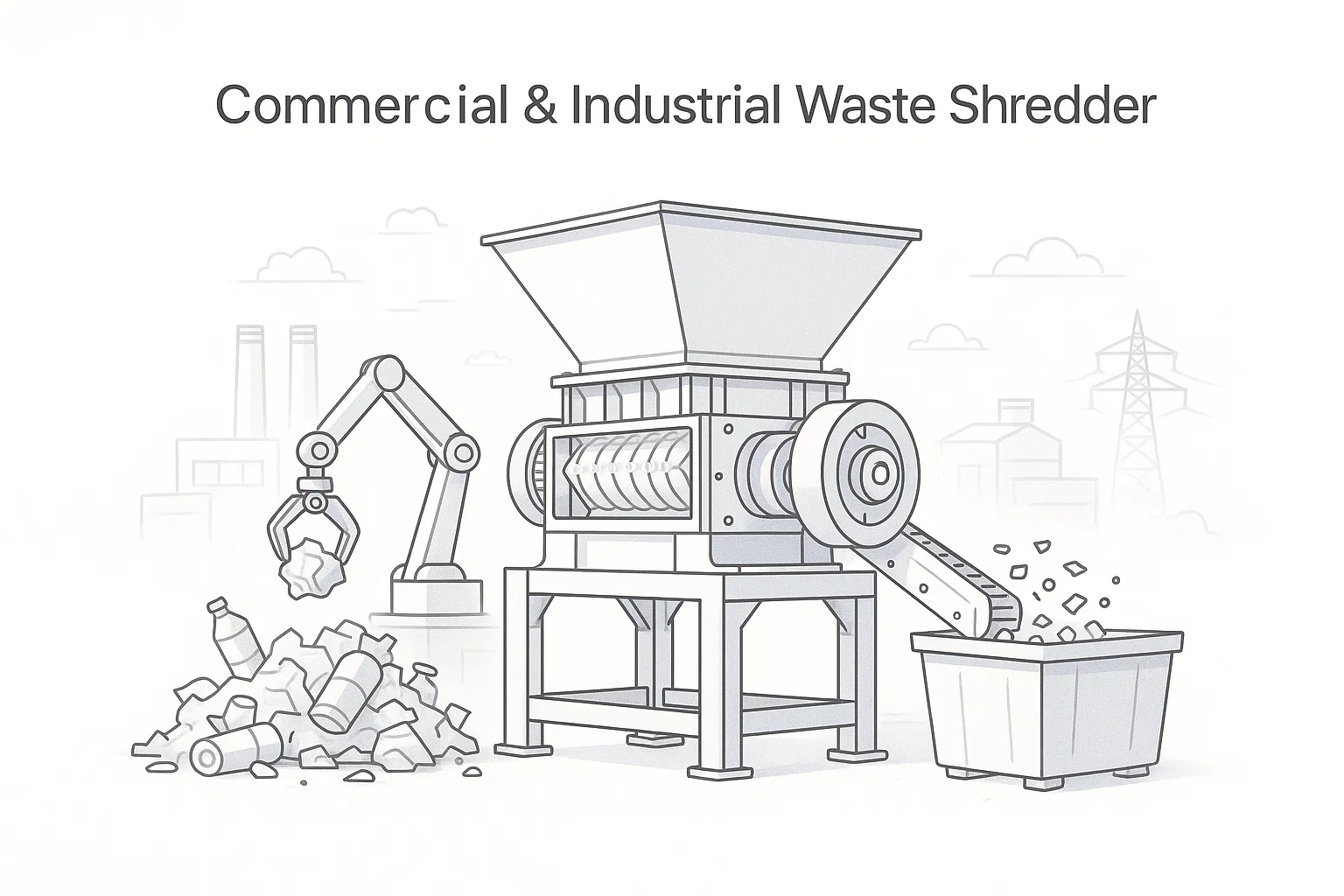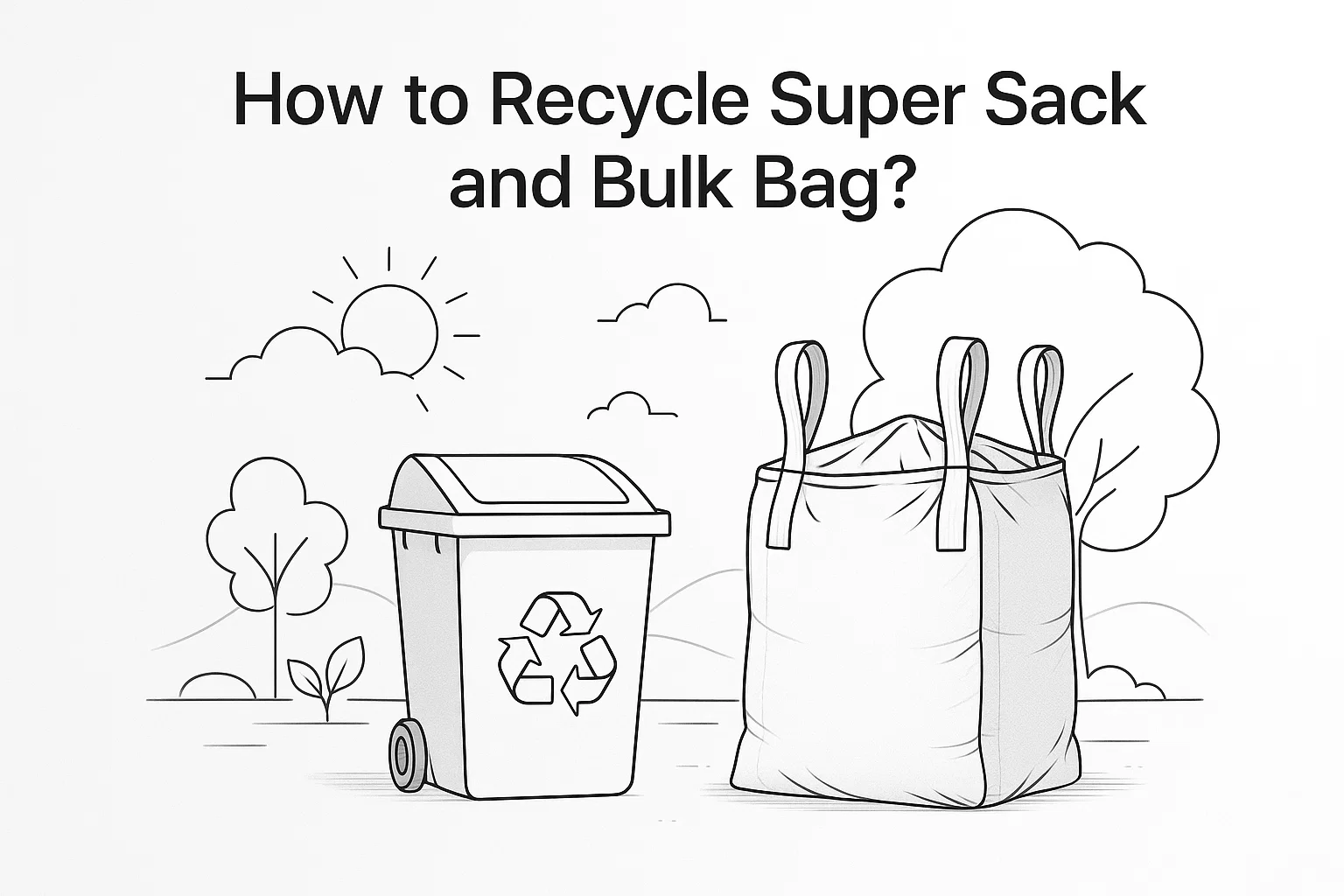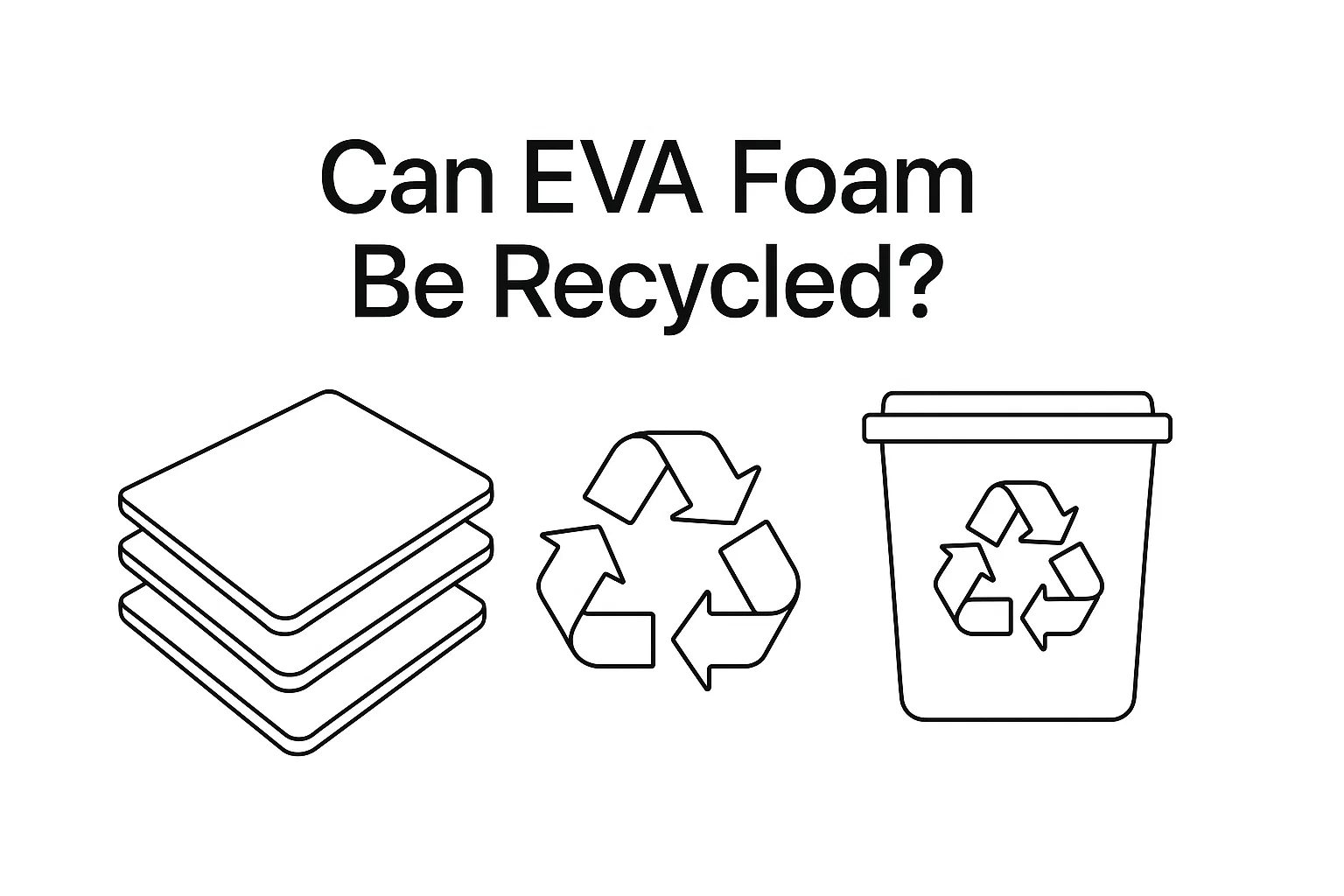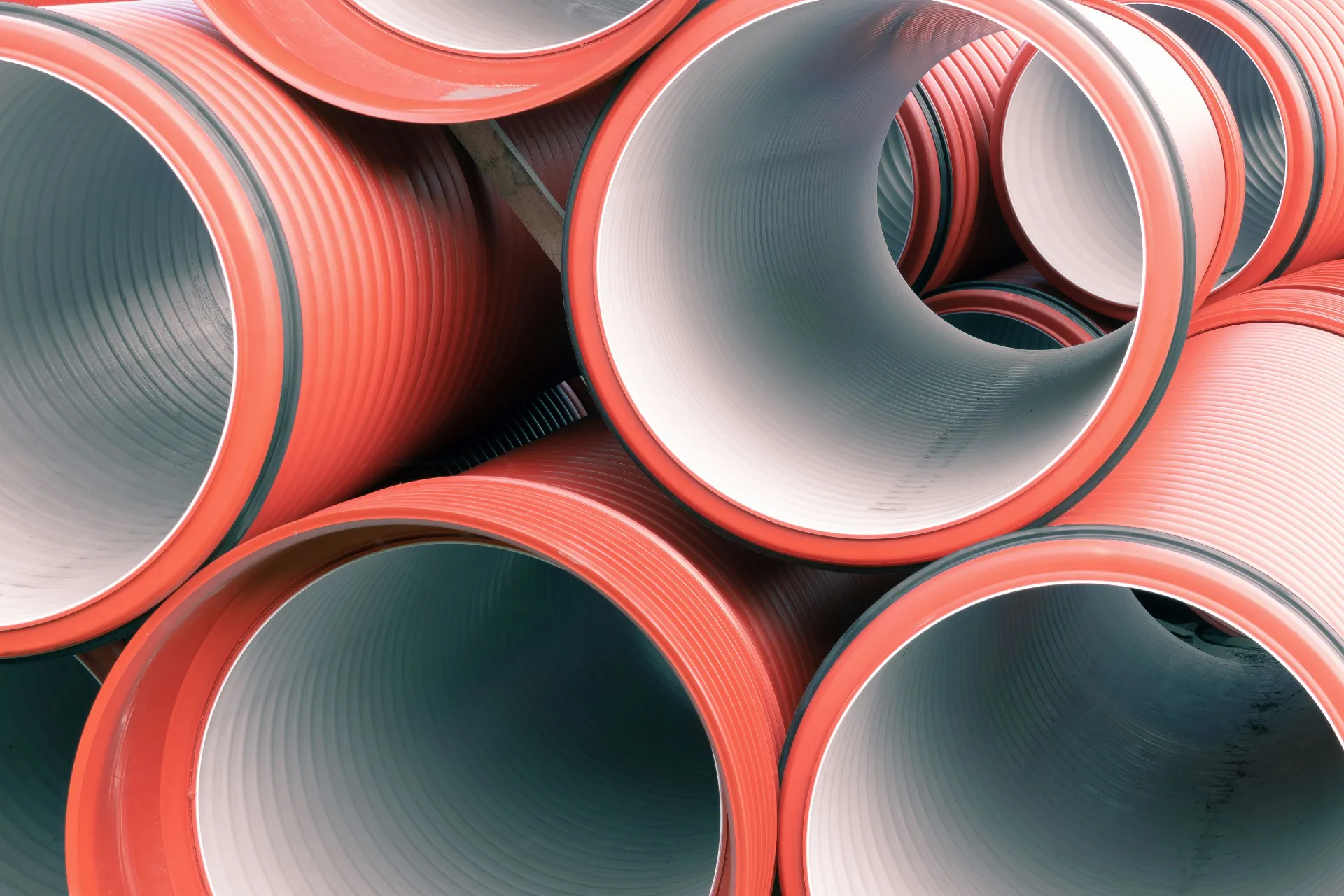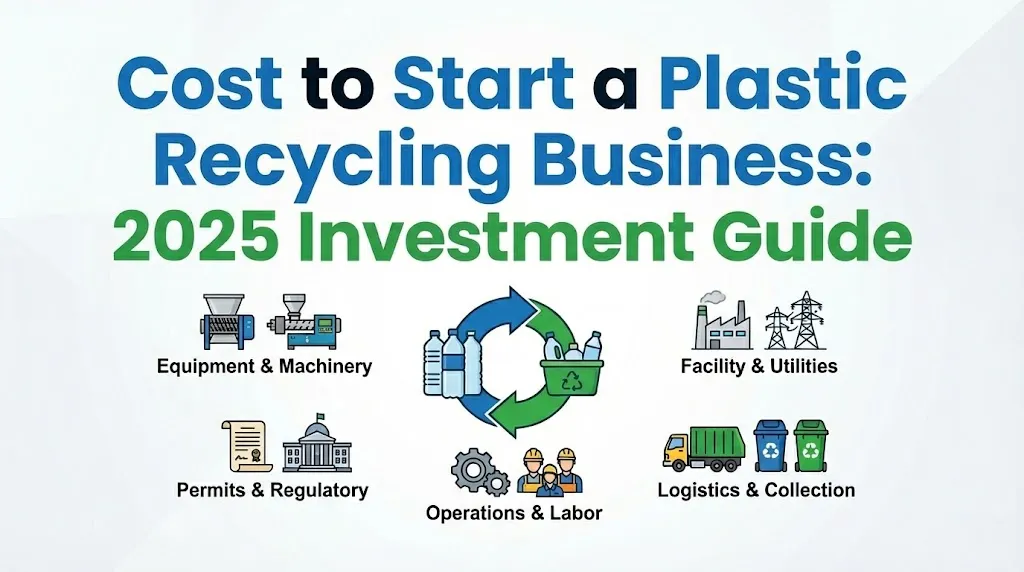Recycling News
Europe is at the forefront of the global circular economy. With strict environmental regulations, ambitious recycling targets, and rising demand for high-quality recycled plastics, European recycling plants require reliable, compliant, and energy-efficient plastic recycling equipment.
This guide explains what European recyclers look for when investing in plastic recycling machinery—and how to select the right equipment for long-term success.
1. Why European Recycling Plants Have Higher Equipment Requirements
Unlike many other markets, European recycling facilities must operate under tight regulatory, safety, and quality constraints. Equipment decisions are influenced not only by price but also by:
- EU recycling policies and waste management directives
- CE safety and compliance requirements
- Energy efficiency and reduced carbon emissions
- Water consumption and wastewater recovery
- Output quality (especially for food-grade and closed-loop recycling)
As a result, plastic recycling equipment for Europe must be engineered differently, with a stronger focus on automation, process stability, and compliance.
2. Core Plastic Recycling Equipment Used in European Plants
A modern European recycling plant consists of several interconnected systems rather than standalone machines. These systems must work together to ensure consistent quality and high throughput.
2.1 Shredding and Size Reduction
The first step in many recycling operations is shredding and size reduction. European recyclers often process contaminated post-consumer plastics, so equipment must be robust and flexible enough to handle:
- Bottles, jars, containers
- Films and agricultural plastics
- Mixed polymers and labels
- Occasional metal contamination
Low-speed shredders and heavy-duty granulators ensure controlled size reduction with minimal wear.
2.2 Washing Lines – The Heart of the Plant
Efficient washing is the backbone of any plastic recycling plant. European facilities rely on advanced systems like the Recycling Washing System to deliver clean, dry plastic flakes ready for reprocessing.
Key Washing Line Technologies:
- Pre-washing and drum washing
- Hot washing systems (especially for PET)
- Friction washers
- Sink-float separation tanks
- High-speed centrifugal dryers
Efficient washing lines not only improve output quality but also reduce operating costs by saving water and energy.
2.3 PET Bottle Recycling Systems
PET is one of the most recycled materials in Europe, especially in countries with bottle deposit return schemes. For facilities processing PET, the PET Bottle Recycling System ensures top-tier cleanliness and consistent throughput.
These systems are engineered for:
- High-efficiency hot wash
- Label and adhesive removal
- Effective contaminant separation
- Consistent flake quality ready for further processing
European PET recyclers targeting food-grade or bottle-to-bottle applications place particular emphasis on hot washing and moisture-controlled outputs.
2.4 Rigid Plastic Washing Lines
Beyond bottles and films, rigid plastics like crates, drums, and industrial containers require specialized systems. The Rigid Plastic Washing Line for PP, HDPE, PVC is designed to process these challenging materials with high throughput and thorough cleaning.
These lines typically include:
- Heavy-duty pre-wash
- High-torque friction washers
- Aggressive decontamination systems
- Efficient drying solutions
Rigid plastic washing lines are increasingly in demand in EU markets processing packaging, industrial waste, and consumer goods plastics.
2.5 Drying and Dewatering Systems
After washing, moisture must be removed efficiently to prepare the material for extrusion or pelletizing. European recyclers often require high-performance drying systems such as those outlined on the Drying Systems page.
Effective drying is crucial for:
- Reducing final moisture below 1–3%
- Preparing flakes for consistent extrusion
- Lowering energy costs in downstream processing
3. Compliance and Certification in Europe
3.1 CE Certification and Safety Standards
All plastic recycling equipment installed in Europe must be CE-compliant, covering:
- Mechanical safety and guarding
- Electrical and control system certification
- Emergency stop systems
- Operator safety and ergonomic design
European buyers commonly request full CE documentation before progressing in purchase discussions.
3.2 Food-Grade and Bottle-to-Bottle Requirements
For recyclers aiming at bottle-to-bottle or food-grade PET recycling, additional scrutiny is applied to washing and decontamination processes. Washing systems must deliver consistent cleanliness and moisture control to meet stringent downstream requirements.
4. Energy and Water Efficiency – A Key Buying Factor
European recycling facilities are under constant pressure to reduce operating costs and environmental impact.
When selecting plastic recycling equipment, buyers focus on:
- Power consumption per ton of output
- Water circulation, filtration, and recovery systems
- Heat recovery in hot washing stations
- Automation and real-time process control
Equipment with optimized energy and water usage not only reduces OPEX but also enhances a plant’s sustainability profile—an important factor for EU funding, certification, and ESG commitments.
5. Turnkey Plastic Recycling Solutions
Many European buyers opt for comprehensive project solutions rather than isolated machines. The Recycling Solutions page highlights complete plant solutions, from initial layout design to installation and after-sales support.
Turnkey solutions typically include:
- Engineering and process design
- Complete equipment integration
- Installation and on-site commissioning
- Operator training and technical support
Such holistic services help recyclers reduce risk, improve uptime, and accelerate ROI.
6. How to Choose the Right Supplier for European Markets
When evaluating suppliers of plastic recycling equipment, experienced European recyclers look for:
- Proven installations in Europe or similar markets
- CE-ready machinery and documentation
- Engineering-led solutions rather than generic machines
- Transparent technical information and process support
- Long-term spare parts availability and service
Selecting the right partner is as important as selecting the right equipment.
7. Final Thoughts
European recycling plants operate in one of the most demanding regulatory and operational environments in the world. Investing in compliant, efficient, and integrated plastic recycling equipment increases profit margins, enhances product quality, and supports long-term sustainability goals.
With advanced washing systems, high-efficiency drying solutions, and turnkey recycling plant options, equipment suppliers can help European recyclers thrive in a competitive, compliance-driven marketplace.
In the waste recycling industry, carpets and upholstery are notoriously difficult to process. They are the materials that test the limits of machinery.
If you manage a recycling facility, you have likely faced this scenario: a general-purpose shredder is running at full speed, only to come to a grinding halt because a roll of old carpet has wrapped itself tightly around the main shaft. Your team then has to spend hours manually cutting the material free. This downtime isn't just a financial loss; it is a major safety hazard.
Choosing the right Industrial Textile Shredders for Carpet and Upholstery Waste isn't just about raw horsepower. It is about selecting blade geometry and rotor designs engineered to handle materials that are "soft" yet incredibly strong. At Energycle, we understand that processing these complex composites requires a specific engineering approach.
Why Are Carpets and Upholstery So Hard to Shred?
To solve the problem, you first need to understand the material behavior. Carpets and soft furniture aren't single materials; they are complex hybrids that create a "perfect storm" for standard machinery:
- Extreme Tensile Strength: Carpets are often woven from nylon or polypropylene fibers designed specifically to resist tearing. If the cutting gap on a shredder is too wide, these fibers will simply slip through and wrap around the rotor.
- Abrasive Backing: Carpet tiles and broadloom often feature heavy latex, PVC, or bitumen backings. These contain calcium carbonate fillers that act like sandpaper, wearing down standard steel blades rapidly.
- Heat Sensitivity: Many synthetic textiles have low melting points. When a dull blade rubs against the fabric instead of cutting it, friction generates heat. This causes the plastic to melt and fuse to the machine, leading to a complete blockage.
The Solution: Why Single-Shaft Technology Wins
For these materials, a standard twin-shaft shear shredder often struggles to control output size and is prone to wrapping. Based on field experience, a high-torque single-shaft shredder equipped with a hydraulic pusher is the superior choice.
We specifically recommend utilizing a dedicated textile waste single-shaft shredder. Unlike gravity-fed systems, this equipment uses a hydraulic ram to force the fluffy carpet or bulky sofa foam against the spinning rotor, ensuring that every rotation results in a cut, not a slip.
Key Engineering Features That Matter
- Zero-Gap Cutting: For textiles, the gap between the rotating knife and the stationary counter-knife must be precise (often around 0.5mm). This creates a "scissor-like" action that shears the fiber cleanly rather than tearing it.
- Anti-Tangle Rotor Design: Our rotors are designed with specific knife arrangements and protective cover plates at the shaft ends. This prevents fibers from migrating into the bearings—a common killer of recycling equipment.
- Screen-Controlled Output: Unlike twin-shaft machines, a single-shaft shredder holds the material inside the chamber until it is small enough to pass through a screen (e.g., 40mm). This guarantees a uniform size suitable for downstream processing.
From Waste to Energy: Unlocking Hidden Value
Investing in high-performance Industrial Textile Shredders for Carpet and Upholstery Waste is about more than just volume reduction; it is about creating a sellable product.
Processed carpet and textile scraps possess a very high calorific value, making them an ideal feedstock for Refuse Derived Fuel (RDF) or Solid Recovered Fuel (SRF). According to data from the Confederation of European Waste-to-Energy Plants (CEWEP), properly treated textile waste can offer energy yields comparable to brown coal.
By converting bulky, dirty carpets into uniform, high-density RDF fluff, you transform a material that costs money to landfill into a fuel product sought after by cement kilns and power plants. This shift can fundamentally change the economics of your operation.
Maintenance: Keeping Your Shredder Running
Owning a great machine is step one; maintaining it ensures your ROI.
- Monitor the Amperage: Modern control systems watch the motor load. If the shredder hits an unbreakable object (like a hidden metal bracket in a sofa), the system should auto-reverse to protect the drive train.
- Rotate, Don't Just Replace: Because carpet backing is abrasive, knife edges wear down. Our designs use square, rotatable knives. When one edge dulls, you simply turn it 90 degrees to use a fresh edge, effectively quadrupling the life of your consumables.
At Energycle, we don't just supply iron; we help you engineer a workflow that handles your specific waste stream. Don't let tough textile waste bottle-neck your production line. Choose the right tool for the job, and turn that pile of carpet into a valuable energy resource.
Introduction: The Hidden Value in Woven Polypropylene
In the logistics and manufacturing sectors, Super Sacks—technically known as Flexible Intermediate Bulk Containers (FIBCs)—are the backbone of material transport. From agriculture to mining, these durable woven Polypropylene (PP) bags are indispensable. However, their durability creates a significant challenge at the end of their lifecycle.
In the modern manufacturing landscape, Ethylene-Vinyl Acetate (EVA) is ubiquitous. From the soles of high-performance footwear to critical components in the solar energy sector, this material is prized for its versatility. However, as production volumes soar, so does the volume of industrial scrap and post-consumer waste.
In the high-stakes world of plastic recycling, moisture is the enemy of quality. For plant managers and procurement specialists, the difference between a premium recycled pellet and a defective product often comes down to a single stage in the process: drying.
While washing removes contaminants, it leaves the plastic saturated. If this moisture isn't effectively removed before the extrusion process, it leads to bubbles, structural weaknesses, and degradation in the final product.
This is where the Plastic Centrifugal Dryer becomes the MVP of your production line. But how exactly does it achieve high-speed dewatering without consuming the massive energy required by thermal heaters? Here is a deep dive into the working principle of these essential machines and why Energycle technology leads the pack.
What is a Plastic Centrifugal Dryer?
A Centrifugal Dryer (often referred to as a Dewatering Machine) is a mechanical drying unit designed to remove surface moisture from hard plastic materials (like PET flakes, HDPE granules, and PP scraps) and soft plastics (like films) immediately after the washing phase.
Unlike thermal dryers that use heat to evaporate water (a slow and energy-intensive process), centrifugal dryers utilize kinetic energy. By spinning material at high velocities, they mechanically separate water from plastic, preparing the material for the extruder or subsequent thermal drying stages.
The Energycle Standard: Our dryers are engineered to reduce moisture content to as low as 1-2% for rigid plastics, significantly reducing the workload on downstream thermal systems.
The Physics of Efficiency: How It Works
To understand the value of an Energycle dryer, one must look inside the chamber. The operation is a symphony of aerodynamics, centrifugal force, and mechanical impact.
1. The Intake (Feeding)
Wet plastic material—often a slurry of flakes and water coming from a friction washer or floating tank—is fed into the lower section of the dryer, usually via a screw conveyor or hopper. A consistent feed rate is crucial to prevent clogging and ensure uniform drying.
2. High-Speed Rotation and Impact
At the heart of the machine is a high-speed rotor equipped with specially angled paddles or blades.
- Rotational Velocity: The rotor spins at high RPMs (typically between 1,200 to 2,000 RPM depending on the model).
- Impact: As the plastic enters, the rotating paddles strike the wet flakes, instantly accelerating them. This impact helps dislodge water adhering to the surface of the plastic.
3. Centrifugal Separation
This is the core principle. The spinning rotor generates massive centrifugal force, throwing the material outward toward the walls of the machine.
- The Screen Basket: Surrounding the rotor is a heavy-duty perforated screen (usually made of stainless steel).
- Separation: The force drives the water through the mesh perforations (which are sized specifically to allow water out but keep plastic in). The water hits the outer casing and drains away via a bottom outlet.
4. Axial Movement and Airflow
The paddles are not just flat; they are angled to create an upward or forward airflow.
- Transport: This design lifts the plastic flakes spirally toward the upper discharge port.
- Secondary Drying: The high-speed rotation creates a vacuum effect, drawing in air. The friction between the paddles and the plastic generates kinetic heat, which aids in evaporating residual surface moisture as the plastic travels through the machine.
5. Discharge
The dried plastic is ejected from the top of the machine, usually into a cyclone or storage silo, ready for the next processing step.
Why Energycle? The Strategic Advantages
Choosing the right Centrifugal Dryer Dewatering Machine for Plastic Drying is not just about removing water; it's about operational efficiency. Here is why leading recycling plants choose Energycle:
1. Superior Moisture Reduction
Efficiency is measured in percentage points. While standard dryers might leave 5% moisture, high-performance units aim for <2%. This protects your extruder from "foaming" issues caused by steam generation inside the barrel.
2. Mechanical "Scrubbing" Effect
The friction generated inside an Energycle dryer does more than dry; it cleans. The high-speed impact knocks off residual sand, paper labels, and fines (micro-plastics) that washing tanks might have missed, acting as a final polishing step.
3. Energy Efficiency vs. Thermal Drying
Thermal drying is expensive. It requires heating air and maintaining temperature. Mechanical centrifugal drying uses a fraction of the energy to remove the bulk of the water (up to 98% of it).
- Cost Tip: Use a centrifugal dryer to remove the "easy water" mechanically, and only use thermal heat for the final trace moisture. This creates the most cost-effective drying line.
4. Durability and Maintenance
Processing abrasive plastics wears down machinery. Energycle dryers are built with:
- Wear-Resistant Rotors: Hardened steel blades to withstand impact.
- Self-Cleaning Screens: Air/water purge systems to prevent screen blinding (clogging).
- Heavy-Duty Bearings: Situated outside the wet zone to prevent contamination and ensure longevity.
Applications: Rigid vs. Soft Plastics
It is vital to select the machine configuration based on your material:
- Rigid Plastics (PET Flakes, HDPE Bottles, ABS): These require high RPMs and aggressive paddle designs. The goal is maximum impact to shake off water.
- Soft Plastics (LDPE Films, Woven Bags): These are trickier as they can clog screens. Energycle utilizes specific "Squeeze Dryers" or modified centrifugal dryers with lower RPMs and larger screen perforations to handle the fluffy nature of film without blocking the flow.
Quick Comparison: Rigid vs. Soft Plastic Drying
Selecting the right centrifuge configuration is critical to preventing machine blockages and ensuring target moisture levels. Here is how the operational parameters differ based on material type:
| Feature | Rigid Plastics Dryer | Soft Plastics Dryer (Film/Woven) |
| Target Materials | PET Flakes, HDPE Granules, ABS, PP Caps | LDPE Film, PP Woven Bags, Agricultural Film |
| Rotor Speed (RPM) | High (1,200 - 2,000+) Needs high G-force to shear water off. | Medium (1,000 - 1,200) Prevents material from clumping or melting. |
| Screen Mesh Size | Small (2mm - 3mm) Retains small fines while allowing water drainage. | Large (5mm+) Prevents fluffy material from blinding (clogging) the screen. |
| Blade Design | Angled Paddles Maximized for impact and friction. | Sweeping/Guide Arms Designed to keep material moving prevents wrapping. |
| Residual Moisture | < 1-2% | 3-5% (Often requires a Squeeze Dryer for lower results) |
Conclusion: Investing in Process Integrity
The Plastic Centrifugal Dryer is the gatekeeper between a dirty waste stream and a high-quality recycled pellet. By utilizing centrifugal force, mechanical impact, and airflow, it provides a rapid, energy-efficient solution that thermal methods simply cannot match for bulk water removal.
For recycling plant managers, the choice is clear. Reliable drying equipment protects your downstream machinery, ensures consistent pellet quality, and lowers your energy overhead.
Is your current drying system holding back your production capacity?
Explore the robust engineering of the Centrifugal Dryer Dewatering Machine for Plastic Drying at Energycle, and elevate your recycling line today.
In the modern era of the circular economy, the Plastic Pelletizer is not just a machine; it is the heartbeat of the recycling industry. For plant managers and procurement specialists, understanding this equipment is the difference between operational inefficiency and high-margin profitability.
At Energycle, we engineer machinery that turns plastic waste—often seen as a liability—into high-quality, market-ready raw materials. This guide explores the mechanics of pelletizing technology and why it is the cornerstone of sustainable manufacturing.
Introduction: The Engine of Plastic Recycling
A plastic pelletizer is a specialized industrial machine designed to melt, homogenize, and shape plastic waste (such as films, bottles, and rigid scraps) into uniform pellets. These pellets serve as the "virgin-like" feedstock for manufacturers producing everything from piping to packaging.
For recycling plants, the goal is consistency. A high-quality pelletizer ensures that recycled pellets have the same density, moisture content, and melting index as new materials, allowing them to be sold at a premium.
How Does a Plastic Pelletizer Work?
While the core concept is simple—melt and cut—the engineering behind it determines the quality of your output. Here is the elevated, step-by-step breakdown of the process.
1. Feeding: The Critical First Step
The process begins with feeding plastic scraps, granules, or flakes into the hopper.
- The Challenge: Inconsistent feeding causes surging and uneven pellets.
- The Solution: Modern systems use force-feeders or cutter-compactors to handle lightweight materials like films (PE/PP) effectively. This ensures the extruder screw is always "hungry" but never choked, maximizing throughput.
2. Heating and Melting (Plasticization)
Once the material enters the barrel, it is subjected to intense shear heat and external heating zones.
- The Science: The rotating screw creates friction (shear stress), which does 80% of the melting work.
- Degassing: Crucially, high-end pelletizers feature vacuum degassing zones. This removes moisture and ink volatiles from printed plastics, preventing bubbles and defects in the final pellets.
3. Extrusion and Filtration
The molten plastic, now a thick, viscous fluid, is pushed through a filtration screen before reaching the die.
- Filtration: A hydraulic screen changer filters out contaminants like paper labels, metal, or wood. Without this, the final product would be unusable for high-precision manufacturing.
- Pressure: The melt is then forced through a die head, which acts as the "mold" for the plastic strands.
4. Cooling the Plastic
As the plastic exits the die, it must be cooled immediately to lock in its shape.
- Strand Cooling: In traditional systems, spaghetti-like strands pass through a water bath.
- Die-Face/Water Ring: For materials like PE films, the cutting happens at the die face, and pellets are immediately flung into a water ring for cooling. This reduces the footprint and labor required.
5. Cutting into Uniform Pellets
The final step is sizing.
- Strand Pelletizing: Solidified strands are pulled into a granulator and chipped into cylinders.
- Hot Cut (Die Face): Rotating blades cut the plastic while it is still hot and molten against the die face.
- The Result: Uniform, free-flowing pellets ready for bagging, storage, or immediate sale.
Types of Pelletizing Systems: Which Do You Need?
Selecting the right Plastic Pelletizer depends entirely on your material type (Rigid vs. Film) and moisture levels.
1. Strand Pelletizing Lines
- Best For: Engineering plastics, rigid regrinds (ABS, PA, PC), and high-viscosity materials.
- Pros: Simple operation, easy maintenance, and excellent for compounding.
- Cons: Requires manual lacing of strands during startup.
2. Water Ring / Die-Face Pelletizers
- Best For: Post-consumer film recycling (LDPE, HDPE, PP).
- Pros: Automated startup (no strand lacing), compact footprint, and handles materials with higher melt flow rates effectively.
- Energycle Insight: Our water-ring systems utilize a unique blade design that ensures pellets are cut cleanly without "tails," preventing clustering in the drying silo.
3. Underwater Pelletizers
- Best For: High-volume production and sticky polymers (TPU, TPE).
- Pros: Produces perfectly spherical pellets with high bulk density.
- Cons: Higher initial investment.
Why Energycle? The "Buyer's Advantage"
In a market flooded with generic machinery, Energycle stands out by focusing on Total Cost of Ownership (TCO).
- Screw Geometry: Our screws are designed with specific L/D (Length-to-Diameter) ratios tailored to your material, ensuring lower energy consumption per kilogram of output.
- Durability: We use bimetallic barrels and hardened screws to resist the wear and tear of abrasive recycled materials (like dirty agricultural films).
- Intelligent Control: Our PLC systems allow you to monitor melt temperature and pressure in real-time, reducing the skill gap required for operators.
Conclusion
A plastic pelletizer is more than just a chopper; it is a precision instrument that dictates the value of your recycled product. Whether you are processing industrial scrap or post-consumer waste, the quality of your machinery directly correlates to the quality of your pellets.
By choosing Energycle, you aren't just buying a machine; you are investing in a process that guarantees efficiency, durability, and a higher ROI.
Ready to upgrade your recycling line?
Contact the Energycle team today to discuss which pelletizing system fits your production goals.
https://www.energycle.com/plastic-pelletizers/



